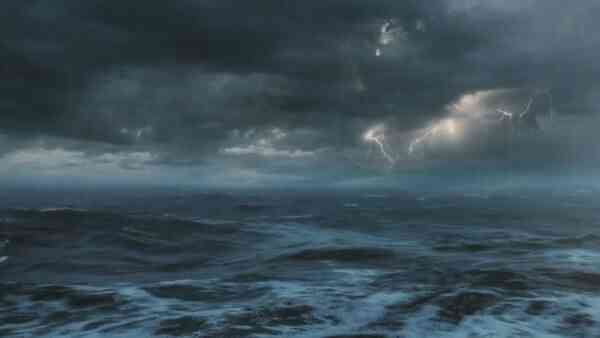The boundless Atlantic Ocean is a beautiful place, incredibly interesting, but also dangerous. From time to time, monstrous hurricanes are born above its surface, which then devastate the coast, and only for modern and high-tech ships they usually do not pose a serious danger. In the past, only the most courageous captains and passengers dared to cross the Atlantic, especially since such a journey took a lot of time.
Interesting facts about the Atlantic Ocean
- It was named after the titan Atlas, one of the characters in the ancient Greek epic. According to legend, Atlas (aka Atlant) held the vault of heaven on his shoulders, preventing it from falling to the ground.
- At the deepest point of the Atlantic Ocean, research probes found the bottom only at around 8742 meters.
- The size of this ocean is second only to the Pacific.
- About 40% of all fish in the world are caught here.
- The area of the Atlantic Ocean is many times larger than the area of any country. For example, it occupies more than 180 times more space than Spain (interesting facts about Spain).
- The Atlantic Ocean touches the borders of almost 100 states.
- The longest current in the world, Gulf Stream, located here in the Atlantic.
- The width of the Atlantic Ocean due to the movement of tectonic plates increases by 3-4 centimeters per year.
- The height of the tides here is a record. In some bays connected with the Atlantic Ocean, it reaches 15-18 meters. This is approximately equal to the height of a 5-6 storey residential building.
- An incredibly huge number of living creatures live in the Atlantic waters. There are 245 species of plankton alone.
- Three of the ten largest rivers in the world flow into it (interesting facts about rivers).
- The Amazon and the Mississippi alone carry about 1 billion tons of soil into the Atlantic Ocean every year. In total, about 1.8 billion tons of solid sediments settle on the bottom every year.
- It occupies about 17% of our planet.
- A quarter of all liquid water in the world is on the Atlantic Ocean.
- The thickness of bottom sediments at its bottom in some places reaches 2 kilometers.
- The Sargasso Sea, the only sea in the world without coasts, is located precisely in the Atlantic Ocean.
- Ocean waters in the south can be very cold. The recorded air temperature record over the Atlantic surface was -34 degrees.
- Located in the Atlantic Ocean, the Bermuda Triangle is still fraught with many secrets.
- A powerful mountain range is hidden at its bottom, which actually divides the ocean bed into two unimaginably huge plains (interesting facts about mountains).
- People have tried 5 times to cross the Atlantic Ocean in balloons, but they have never been successful.
- Wind speeds in hurricanes originating in the Atlantic tropical belt sometimes exceed 200 km/h. The most powerful storms usually hit the Caribbean Sea and the Gulf of Mexico.
- Greenland, the largest island on Earth, went to the Atlantic Ocean.
- In the middle of the 19th century, a large-scale telegraph project began cables across the Atlantic. It took astronomical sums of money and almost 15 years of time to complete it.
- The total volume of water in the Atlantic Ocean is approximately comparable to the volume of all the ice in Antarctica.
- This is the only ocean on Earth that passes through all existing climatic zones from north to south.
- In the last century, there was an honorary award – the Blue Ribbon of the Atlantic, which was received by steamships that managed to cross the ocean in a certain time. With the development of faster ships and aviation, it was gradually forgotten.
- In 2010, in the Gulf of Mexico of the Atlantic Ocean, as a result of the explosion of an oil platform, the largest environmental disaster in the history of mankind occurred at sea.
- The first the man who crossed the Atlantic was the brave discoverer Columbus.
- The average depth of the Atlantic Ocean is approximately 3736 meters.
- According to historical research, the Vikings on their ships crossed the Atlantic Ocean more than a thousand years ago reaching Greenland and North America. But Columbus is still considered the discoverer, because there is no conclusive evidence of such distant sea voyages of the Vikings.
